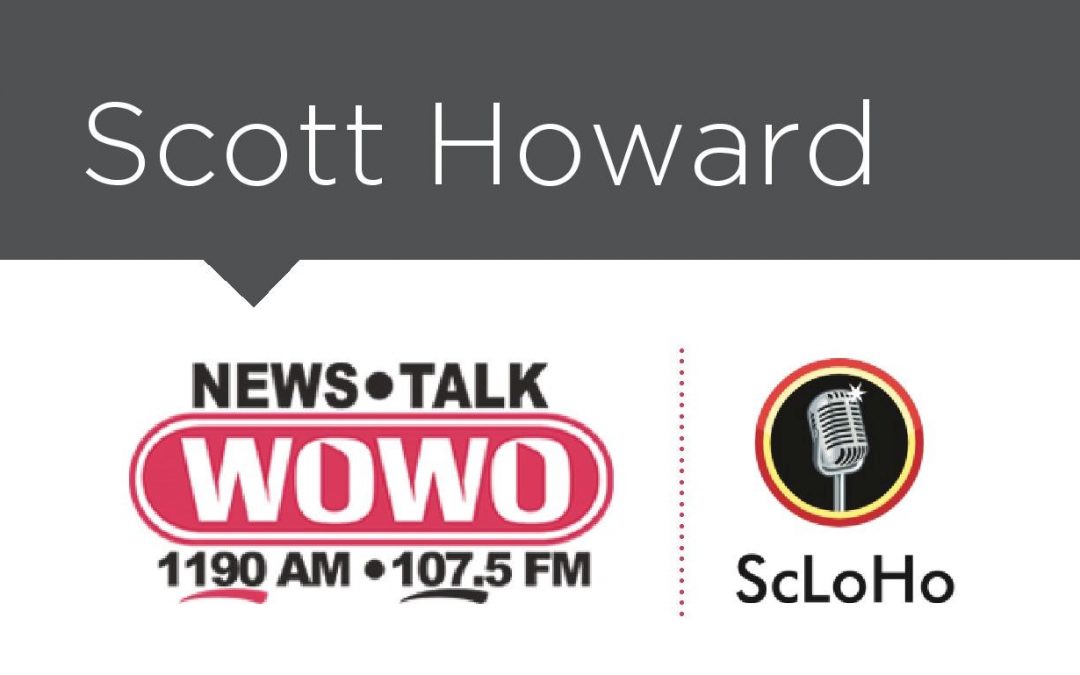
The ScLoHo Difference
Last month I was helping an advertising partner with their TV commercial.
I do not sell TV advertising, I don’t write or produce TV ads or videos.
So what did I do and why did I do it?
I am sharing this with you as an antidote to what someone told me recently is The ScLoHo Difference.
First off, I sell advertising in Fort Wayne, Indiana. This puts me in a bucket of about 100+ people in Fort Wayne who you can buy advertising from. That number may be closer to 200 different people when you count the online options.
So let’s narrow it down to legacy media or traditional media such as TV, Radio, Print which includes direct mail, newspapers and magazines and we are still close to 100.
In the radio business, we have less than 50. My company alone has 23. I work specifically for WOWO radio where we have a team of 5 full time and 2 part-time sales people. That narrows me down to one out of about 5.
This fact, that I am one of the 5 people that can sell you ads on WOWO radio is definitely part of the ScLoHo Difference. However that is just a minor detail.
As I was telling my friend and advertising partner, I sell advertising campaigns to support my real passion of helping businesses with their marketing.
I’ve even come up with a phrase that further defines the marketing philosophy that I work with. It’s called Human Relationship Marketing because it uses Human Relationship Principles.
Now, let me tell you, this is a different approach from all of my WOWO radio co-workers. Each of us at WOWO have our own approach that is as different as our personalities. It’s also different from anyone that I have met who sells advertising in Fort Wayne, which leads me back to what my friend and advertising partner was talking about as she really noticed the ScLoHo Difference in our conversation.
Here are the details of what led her to notice my different approach:
Along with advertising on WOWO radio with me, their company also does other advertising including print and TV.
Their television advertising sales person was working with them to create a commercial that would take advantage of the coop dollars they have earned and was doing the typical easy route. That involved using the corporate video and slapping a dealer tag on the end. In this 30 second ad, 23 seconds was all about the big company and the last 7 seconds was completely different, with my advertising partners name, logo and jingle. It felt like two seperate ads. The corporate ad had dramatic movie music in the background, while the local company tag, had a bright cheerful feel, because that’s the way their jingle sounds. The TV people did put the company logo in the corner of the corporate video but it still wasn’t enough.
The company (my friend and advertising partner) reached out to me to get my ideas and I met with them after I came up with an idea that would solve their problem.
When we first sat down to talk, my friend and advertising partner, out of frustration, asked why her TV advertising salesperson didn’t understand that what they produced was a disjointed mash-up of two separate ads and essentially a bad commercial for their company.
The reason perhaps is the way most advertising salespeople are wired. Their first priority is sales. Their Sales, not their customers sales. Sign a contract and then we will put together some creative stuff that becomes your ad and hope and pray for the best. Too often this ignores the Human Relationship Marketing Principles that I use as my starting point.
I know what I just said sounds harsh. It is. I don’t fault the salespeople who are selling simply to make their own budgets, most of them have been trained to sell that way. Many are successful, but how successful are their clients? And how much more successful could they be if they took a different approach, more like a marketing strategist, instead of an advertising salesperson?
Back to my friend and advertising partner and what I suggested they do…
The company has a recognizable jingle that I has been in place since the 1970’s or perhaps even longer. I use it and their advertising slogan in the ad campaign we have been airing on WOWO radio. I told them to drop the audio track from the corporate video and replace it with their recognizable jingle bed. It created a warm and happy feeling for the entire ad and tied it all together. No one else came up with this idea, apparently. The TV station was instructed to do what I suggested and the ad is now playing.
Like I said the ScLoHo Difference is more than the ability to sell you an advertising schedule on WOWO radio, you also get my thought process and idea creation that we’ll put into action with the campaigns we do on WOWO and also other advertising outreach that you are considering. Want to know more? Contact me.




